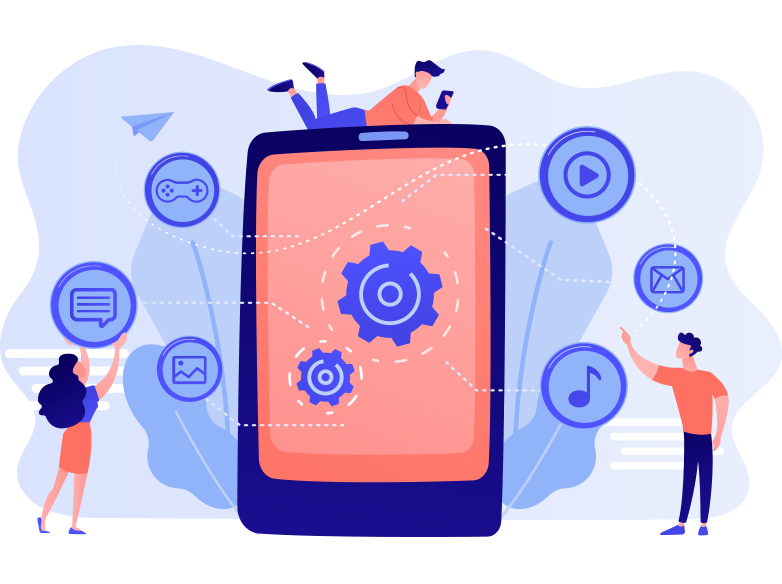At the time of the launch of this new technological invention, everyone was asking the same question: What is a mobile application?
A common question that must be answered with good precision in order to avoid any confusion with other concepts. To be simple and clear, the mobile application is defined as downloadable software. That is easily to install on your smartphone as we do with any software on our laptop.

The downloading of the mobile application is done according to two options:
- On the phone via an internet connection.
- On a PC by connecting it to the mobile phone.
For mobile users, the mobile application is similar to a sophisticated website because of its connection to the internet. In addition, the site interface and the mobile app development dubai are identical except that the application remains fundamentally defined as software. In this sense, mobile applications are grouped into several series according to basic criteria:
- – Applications that work without the Internet: Called independent applications. These are applications that work without needing an Internet or telephone connection, including contact lists, calculators, and others.
- – Applications requiring connection: Unlike independent applications. These applications must have access to the Internet to function.
- – Connected applications: This is an application that requires an Internet connection for proper operation.
- – Applications that interact with other smartphone equipment: every smartphone has a suite of advanced equipment more than ordinary mobile phones. And this equipment is in permanent interaction with certain applications. We cite the barcode or code scan to know the price and characteristics of a product sold in hypermarkets.
- – Application interacting with other mobile users: Generation Y is familiar with connecting to the Internet and mobile phones. Which justifies the importance of applications that strengthen the links between mobile users instead of connecting passively to social networks.
Types of mobile application
Technically speaking, there are three types of mobile applications that any user can encounter:
– Native application:
This is an application that people design for a large part of operating systems. That are reliable by smartphones by referring to a language specific to each of them. This application mode is accessible only on application platforms that follow its particularities and formulas. These platforms remove 25% of the sale price for a paid native application.
The development of the native application requires the use of the smartphone’s memory. However, without omitting the options that relate to the operating system in question. In this way, the result is summarize in the achievement of mobile applications with more professional functions. Develop and efficient at the same level as HTML5 / CSS3 applications and hybrid applications.
The concern with native applications is that users must have a given mobile operating system so that they can use them. To ensure a more exponential use of these mobile application dubai. It is necessary to think about launching the same mobile application compatible with any mobile operating system.
– Web application:
Any application with HTML and CSS design that is also operational on an internet browser for a smartphone that you can call it a web application.
Regardless of the brand of your smartphone, you can access the web application through its browser and therefore you do not need to download it. Since it does not take into account the persistent differences between operating systems and smartphone brands. The web application lacks ergonomics and moreover it does not use the memory of the smartphone which places it inferior to the native application.
– Hybrid application:
This is a mobile application that merges the characteristics of a web application (development in HTML 5) and those of a native application. In this way, the mobile application will be accessible on all application platforms. This type of mobile application minimizes the costs. And duration of its development even if this will be to the detriment of the improvement and quality that characterizes the native application.
Note that hybrid applications are accessible exclusively on iPhone and Android.







